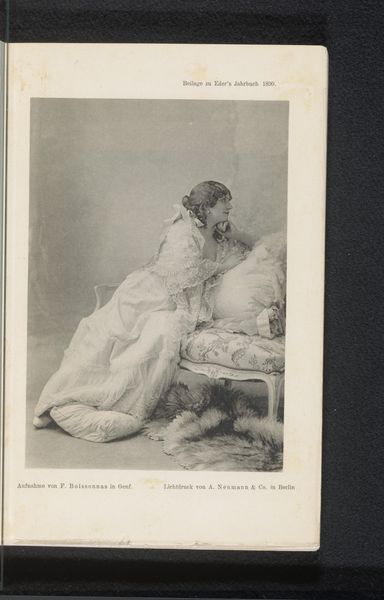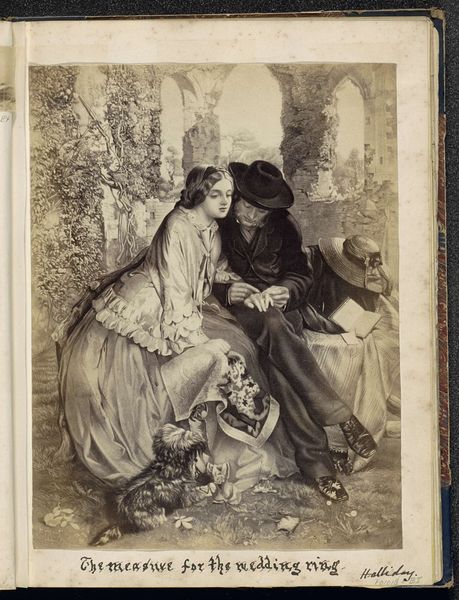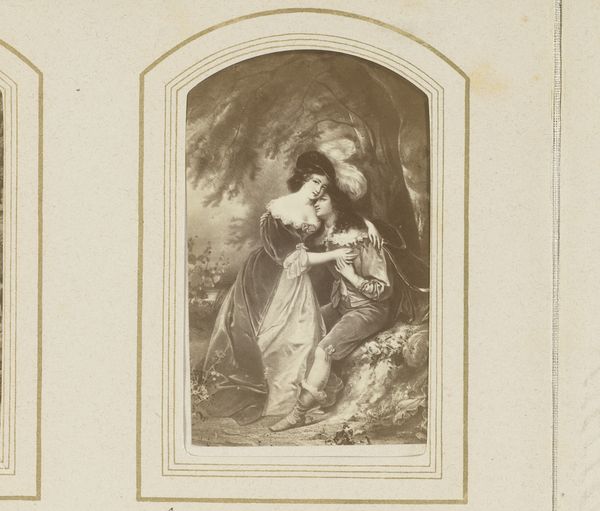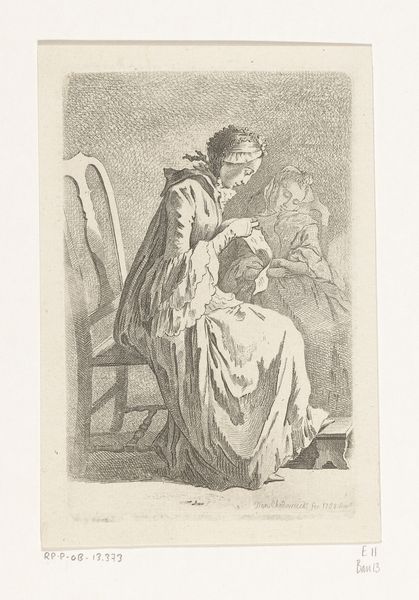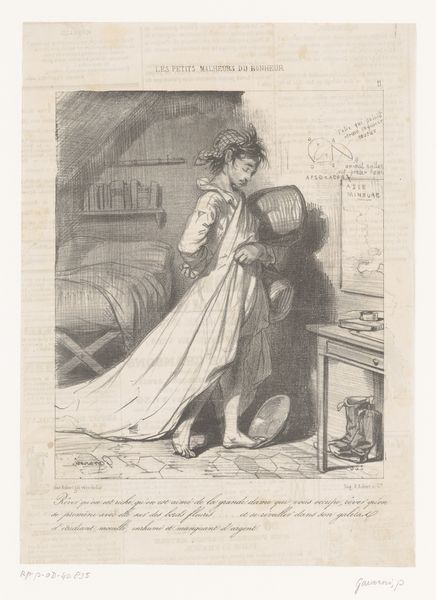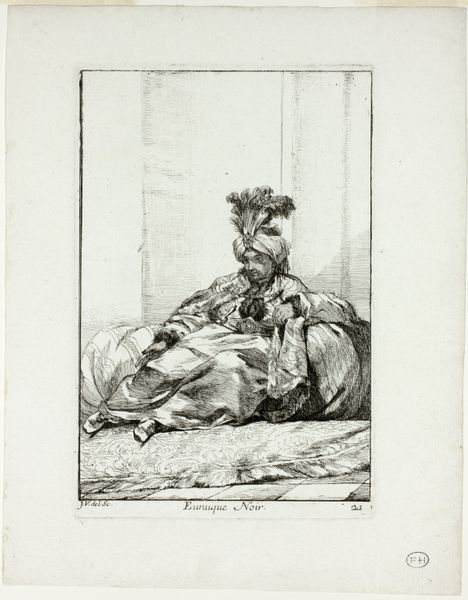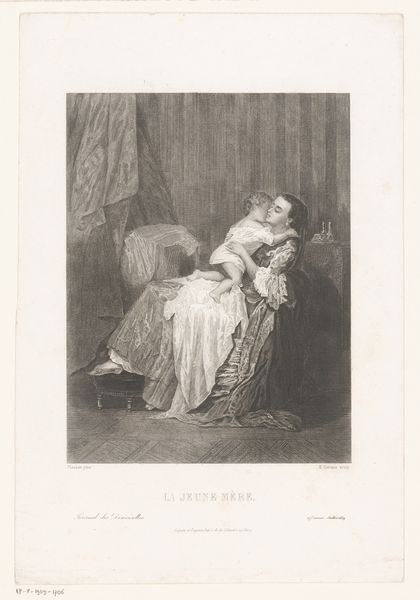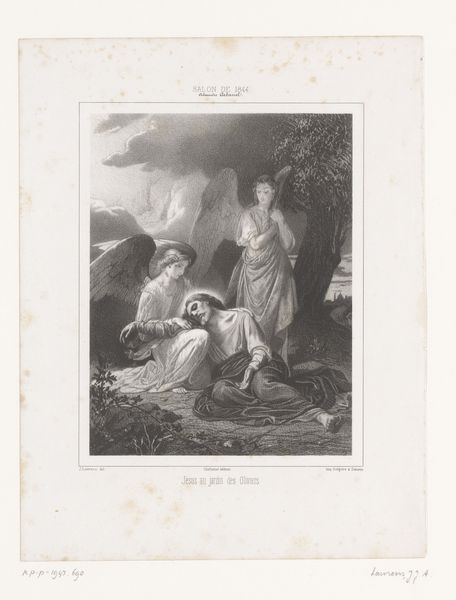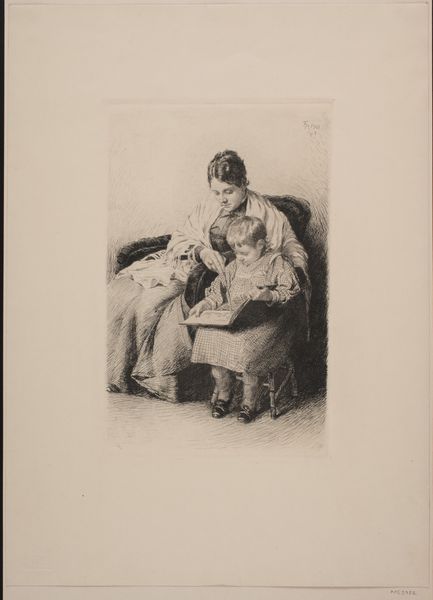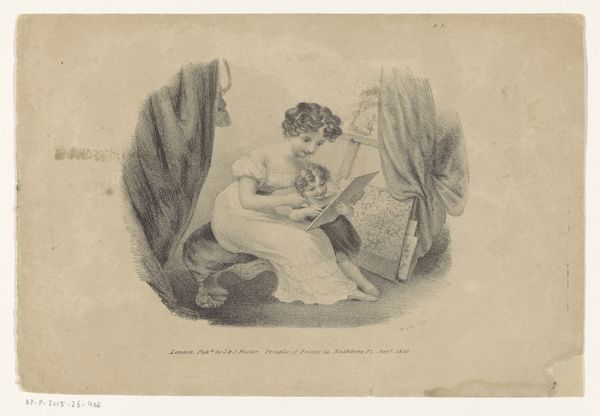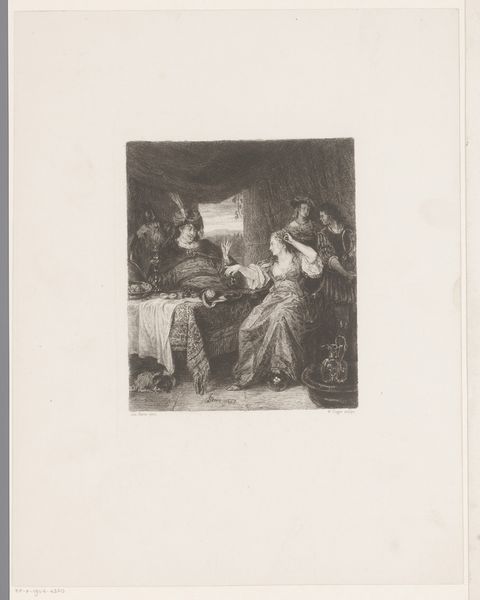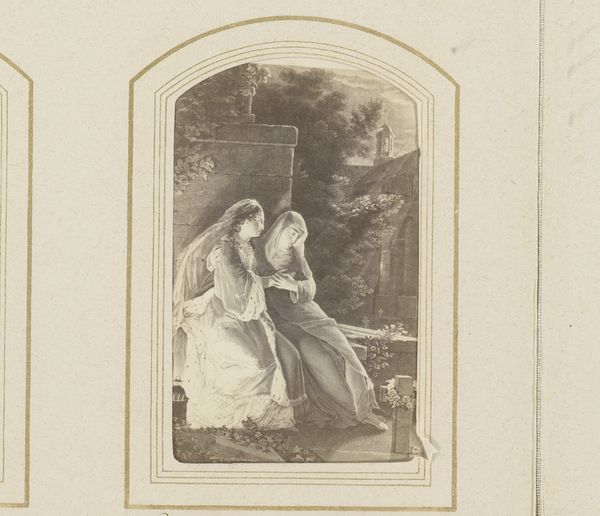
Fotoreproductie van (vermoedelijk) een tekening getiteld 'Faust en Gretchen in de kerker' 1878
0:00
0:00
Dimensions: height 139 mm, width 96 mm, height 172 mm, width 113 mm
Copyright: Rijks Museum: Open Domain
Curator: Here we have a photographic reproduction of a drawing dating back to 1878. It's thought to depict a scene from Goethe's "Faust," specifically "Faust and Gretchen in the Dungeon." Editor: A dungeon indeed. The despair practically radiates from this image. Look at how he's collapsed, burying his face in her lap. And she's chained! It feels like absolute hopelessness. Curator: Yes, and considering its Romantic-era roots, it taps into a specific kind of dramatic suffering. This particular rendition is part of a "Faust-Cycle" by A. Liezen-Mayer, reflecting a broader cultural obsession with Goethe’s work and its potent themes of guilt, redemption, and societal critique. The use of photography here is also interesting – reproducing a drawing allowed wider circulation, shaping the visual understanding of this canonical text for a larger public. Editor: That element of wider circulation is crucial. Because here we're seeing how mass production allows intimate access to tragic events. The staged nature – it is, after all, a photo of a drawing – highlights the performative aspects of morality and societal expectations, and their resulting punishments, at the time. Curator: Note also Gretchen’s symbolic value here. She represents innocence corrupted, a recurring motif across art history – often leveraged to highlight societal failings or injustices against women. Consider the power of these depictions as visual shorthand for debates about law, morality, and gender in 19th-century society. Editor: I agree, she has been completely victimized and embodies the idea of the damsel. It's quite interesting to examine this cultural interpretation now and notice how her image endures even in our modern lens. Curator: Absolutely. The reproduction may feel somewhat distant to our contemporary eyes, but the narrative of moral transgression and tragic consequence that it embodies still echoes. Editor: I think it encourages us to reflect upon societal expectations of moral purity, even now. Curator: A sobering thought, indeed.
Comments
No comments
Be the first to comment and join the conversation on the ultimate creative platform.
